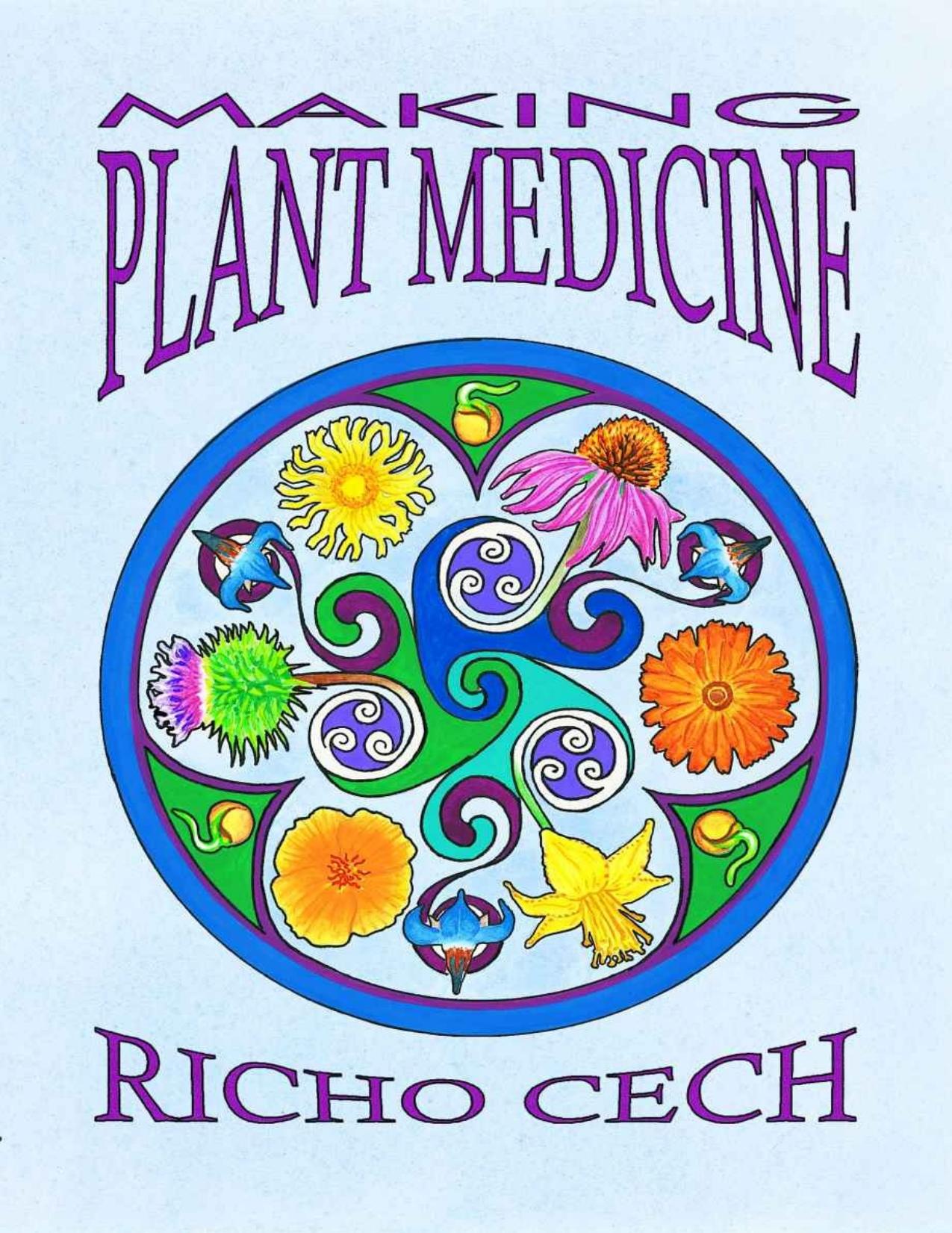Making Plant Medicine by Richo Cech

Author:Richo Cech [Cech, Richo]
Language: eng
Format: azw3, pdf
Publisher: Horizon Herbs LLC
Published: 2014-06-26T04:00:00+00:00
E
Echinacea (Echinacea angustifolia, E. pallida, E. paradoxa, E. purpurea, E. tennesseensis) Family: Asteraceae
Cultivated only
Parts used: Whole root dug during dormancy and used fresh or dried. Leaves and flowers (without the stems) harvested at peak flower and used fresh or dried. Seed harvested at maturity and dried.
Tincture of fresh root or leaves and flowers: 1:2 (75A:25W) Given that the herb contains water- and alcohol-soluble active constituents, the menstruum for the tinctures is designed to extract both fractions. The water-soluble polysaccharides lend a sweet initial taste to good quality root, aerial parts, or to the extract. The alcohol-soluble alkylamides are responsible for the oral “buzzing” sensation experienced when tasting freshly harvested root, aerial portions, or a good quality extract. The seed is particularly high in these alkylamide constituents. Echinacea contains oxygen-labile constituents; therefore, the dried herb does not last long in storage, and fresh preparations are generally preferred; see example, page 43.
Tincture of dried root or leaves and flowers: 1:5 (50A:50W)
Tincture of seed (very strong): 1:5 (75A:25W)
The seeds may be ground up or bruised prior to the addition of the menstruum.
Glycerite of fresh root or leaves and flowers: 1:2 (100Gly)
Water extracts: Tea of dried leaves and flowers. Decoction of dried root.
Direct consumption: A small piece (1 to 2 g) of the fresh or recently dried root may be held in the mouth and slowly chewed. This is as effective as any fancy preparation, a practice that comes to us from the original American herbalists, the Native Americans.
Practical uses: The herb is an immune stimulant that increases overall resistance to disease. Useful in treating the early phases of bacterial or viral infection, echinacea speeds resolution of colds, flu, and all kinds of upper respiratory infection. The herb makes an anti-inflammatory treatment for infected wounds and the bites of reptiles and insects. Echinacea is also a potent sialagogue (promotes salivation). One good test for the quality of herb or extract is how much it stimulates your spit.
Dosage: According to basic recommendations found under “Dosage of tinctures,” pages 49–52 and “Dosage of teas and decoctions,” pages 70–71. Also see “Chapter 7, Herbal Glycerites.”
Oil, salve, or cream: Make an infused herbal oil of the dried leaves and flowers, then proceed to make salve or cream according to the procedure found in “Chapter 10, Basic Formulas for Herbal Oils, Salves, and Creams.” This is useful as a cosmetic skin toner, for treating wounds, and as an anti-inflammatory against stings and venomous bites.
Contraindications: Safe for general consumption, although rare allergic reactions have been recorded. The advisability of using immune-enhancing herbs for treating autoimmune diseases has been challenged.
Other species: The five species of the Echinacea genus listed at the beginning of this entry all have proven immune-enhancing activity. E. angustifolia and E. purpurea are the most commonly employed medicines. However, the aerial parts of E. angustifolia are nearly devoid of alkylamides. Although the specific role of alkylamides in immunostimulation or as a symptomatic palliative is yet unclear, the presence of alkylamides is undeniably a keystone for an effective extract.
Download
This site does not store any files on its server. We only index and link to content provided by other sites. Please contact the content providers to delete copyright contents if any and email us, we'll remove relevant links or contents immediately.
Inner Engineering: A Yogi's Guide to Joy by Sadhguru(6754)
The Power of Now: A Guide to Spiritual Enlightenment by Eckhart Tolle(5681)
Fear by Osho(4699)
Ikigai by Héctor García & Francesc Miralles(4176)
The Art of Happiness by The Dalai Lama(4096)
The Ultimate Bodybuilding Cookbook by Kendall Lou Schmidt(3909)
Yoga Therapy by Mark Stephens(3723)
The Little Book of Hygge by Meik Wiking(3662)
The Healing Self by Deepak Chopra(3529)
Why Buddhism is True by Robert Wright(3424)
The Hatha Yoga Pradipika (Translated) by Svatmarama(3283)
Being Aware of Being Aware by Rupert Spira(3248)
Shift into Freedom by Loch Kelly(3168)
Wild Words from Wild Women by Stephens Autumn(3118)
Work Clean by Dan Charnas(3081)
Happiness by Matthieu Ricard(3022)
More Language of Letting Go: 366 New Daily Meditations by Melody Beattie(3004)
Yoga Body & Mind Handbook by Jasmine Tarkeshi(2850)
Why I Am Not a Feminist by Jessa Crispin(2726)
